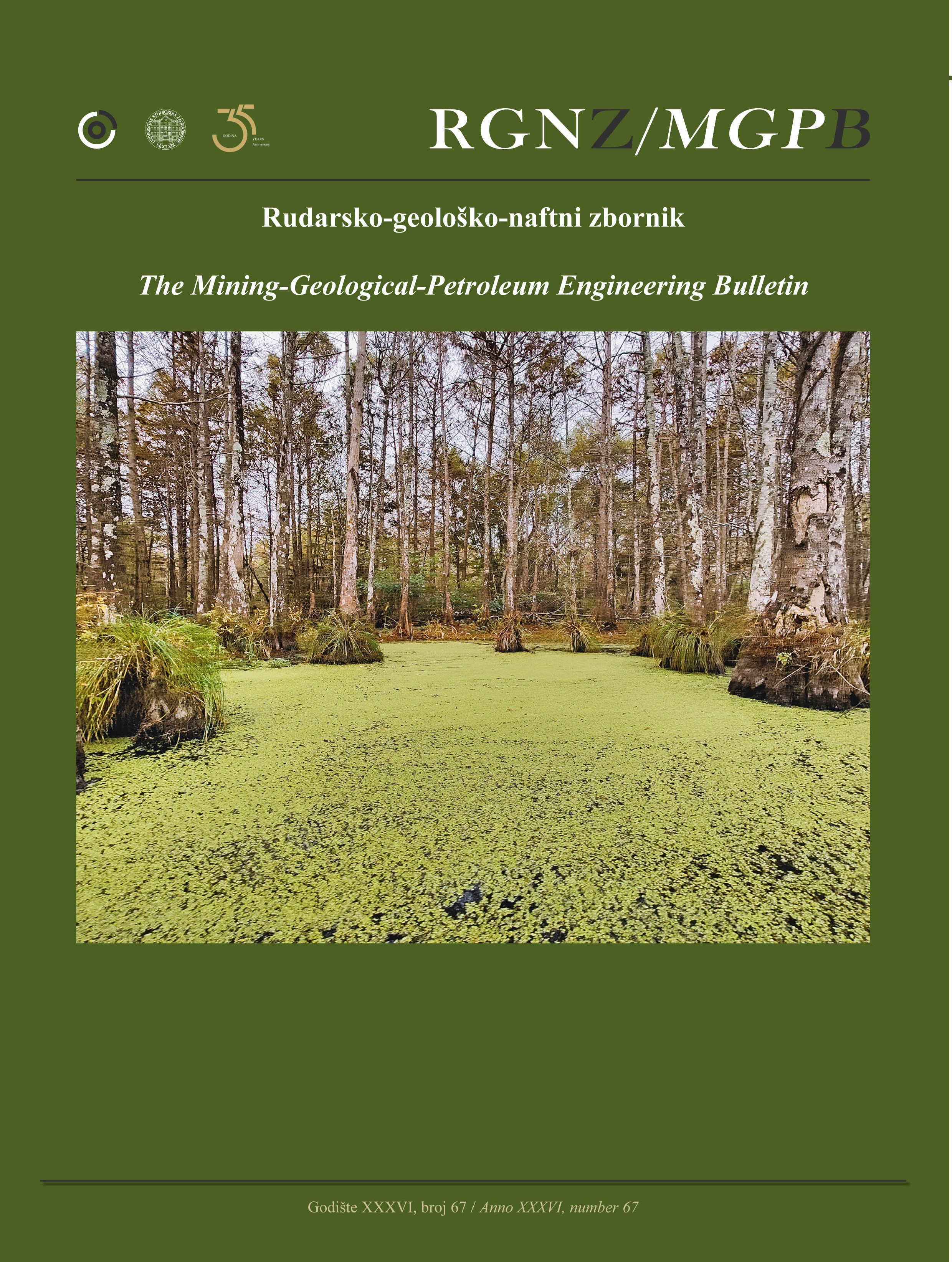Multivariate Data Analysis to Assess Groundwater Hydrochemical Characterization in Rawadanau Basin, Banten Indonesia
DOI:
https://doi.org/10.17794/rgn.2024.1.12Keywords:
HCA, PCA, water chemistry, Rawadanau, volcanic rocksAbstract
A multivariate statistical technique of principal component analysis (PCA) and hierarchical cluster analysis (HCA) has been applied to identify and classify the various water sources that comprise the Rawadanau Basin. The data collection includes 60 samples taken during the dry (29 samples) and the rainy season (31 samples) in tropical regions. Sources of sampled water include dug wells, rivers, cold springs, and hot springs. Water chemistry measurable variables include field data (T, pH, EC), major ions (Na+, K+, Ca2+, Mg2+, Cl-, HCO3-, SO42-), SiO2, Fetotal, Mn, and stable isotopes of water (d2H, and d18O). The correlation of the concentration of water chemistry shows changes in the rainy season to Fetotal and Mn. Interpretation based on HCA using the dendrogram based on the chemical elements of water produces two clusters. Cluster A reflects an unconfined aquifer and bicarbonate type. Meanwhile, cluster B is a chloride type from the confined aquifer and does not change in different seasons. The PCA results show that the three-component matrix accounts for 86.12% of the data structure describing the Rawadanau Basin water sources that volcanic rocks affect and strongly correlate with Na+, K+, Ca2+, and Mg2+. PC1 has a high positive value for hydrochemical composition, indicating that lithology influences the kind of water. PC2 has a positive value for the stable isotope (d18O and d2H), meaning it is the main water source in Rawadanau. PC3 has a positive value for elevation and a negative for longitude, indicating a recharge area influenced by geological factors and is correlated with geothermal influences and volcanic rocks. This multivariate analysis can identify components and clusters of hydrochemical variables that have not been determined in previous studies.
Downloads
Published
How to Cite
Issue
Section
License
Copyright (c) 2024 Priyo Hartanto, Rachmat Fajar Lubis, Boy Yoseph C.S.S. Syah Alam, Yoga Andriana Sendjaja, Ismawan Ismawan, T. Yan W.M Iskandarsyah, Hendarmawan Hendarmawan

This work is licensed under a Creative Commons Attribution 4.0 International License.
Creative Commons-BY
Authors who publish with this journal agree to the following terms:
In agreeing this form, you certify that:
- You read the ethical codex of the RGN zbornik available at journal web.
- You submitted work is your original work, and has not previously been published and does not include any form of plagiarism.
- You own copyright in the submitted work, and are therefore permitted to assign the licence to publish to RGN zbornik.
- Your submitted work contains no violation of any existing copyright or other third party right or any material of an obscene, libellous or otherwise unlawful nature.
- You have obtained permission for and acknowledged the source of any illustrations, diagrams or other material included in the work of which you are not the copyright owner.
- You have taken due care to ensure the accuracy of the work, and that, to the best of your knowledge, there are no false statements made within it.
- All co-authors of this submitted work are aware of, and in agreement with, the terms of this licence and that the submitted manuscript has been approved by these authors.
Publication licence
You retain copyright in your submitted work, according to journal license policy (CC-BY). By signing this form you agree that RGN zbornik may publish it under the publication licence. In summary the licence allows the following:
Anyone is free:
- To copy, distribute, display, and perform the work.
- To make derivative works.
Under the following conditions:
- The original author must always be given credit.
- The work may not be used for commercial purposes.
- If the work is altered, transformed, or built upon, the resulting work may only be distributed under a licence identical to this one.
Exceptions to the licence
In addition to publishing the work printed under the above licence, RGN zbornik will also enable the work to be visible online.
The journal editorial can change the licence rules anytime but it cannot retroactively restrict author(s) rights.


